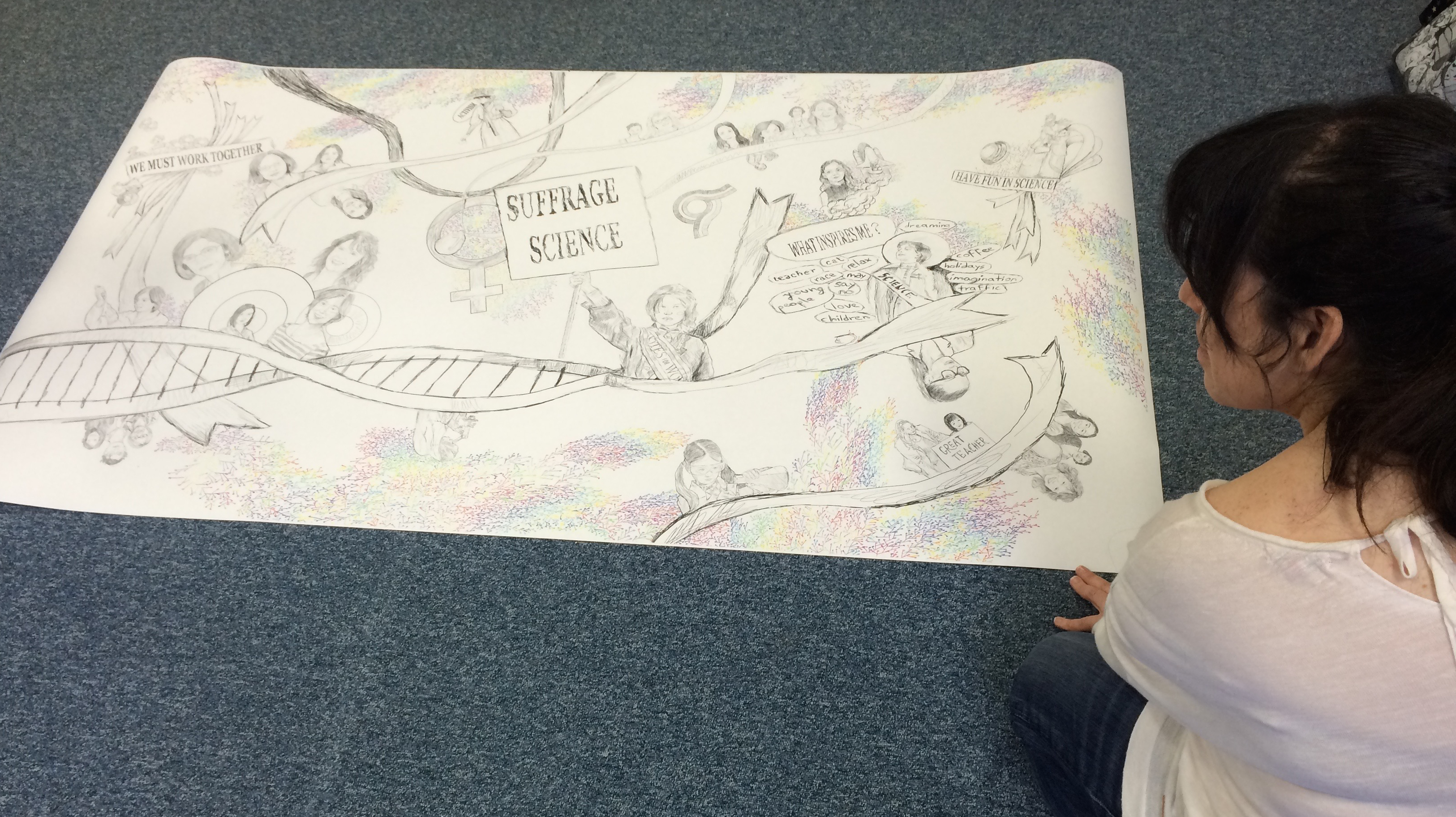By Helen Figueira
May 6, 2016
Time to read: 3 minutes

The latest Suffrage Science artwork is complete, with a strong theme around ribbons, DNA and making connections.
Marta Pinilla Martinez was the artist in residence at this Spring’s handover ceremony for women in life sciences with Suffrage Science awards. She spent the evening sketching as the awards were handed from one group of women to their chosen recipients, drawing inspiration from what they each said and from the debate and discussion in the room.
“I focussed on what I heard during the evening, and on what the women said they feel is important for women in science today. So this included the importance of working together, and the importance of activists. In the Suffragette time, they were fighting for equality in all parts of society.”
Marta said that although there are many women in science today, she feels that they are not as strong a presence in our culture as they might be, and that they seem invisible, almost hidden.

“I looked for the people that got the award. Usually when you look for pictures of women in science it is always the same two or three scientists. They are incredible, but the rest seem lost. For me, it was important to have their presence.”
“I used real pictures of the Suffragettes, and mixed them together with the others in order to mix science and activism.” She also included one of the themes that emerged that evening in March, namely the importance of finding time for fun in science.
Her artwork shows children doing science and people from a range of different cultures, as well as the Suffrage Science jewellery itself. The image is dotted with multiple copies of a characteristic coloured symbol which Marta says she uses a lot. “For me this symbol is a way to represent, in a fractal way, how all is connected to a single thing that is growing. I also like the way these shapes give a sense of physical connection and spreading.” For her, the symbols also help to represent “global thought”.

She says she intentionally used ribbons and DNA coiled throughout the image, and explained why. ”Firstly because there were a lot of people talking about DNA that evening, but also because it is the thing that makes us different, our DNA. So it is important to make a connection between the ribbons, the symbol of the Suffragettes, and the DNA.”
“The thing that was very interesting for me was the pin – the way that it combines the female and the male. In the end we are all connected in different ways.”
Find out more about the Suffrage Science scheme.
Contact
Susan Watts
Head of Communications and Public Engagement
MRC Clinical Sciences Centre